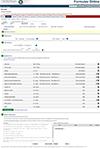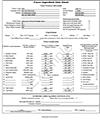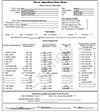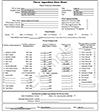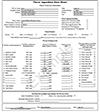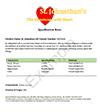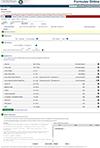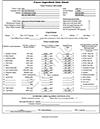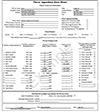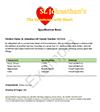October 18, 2017
TTB G 2017-8
Wine Example Formulas
To help you better understand what information, and how much detail, to include in an alcohol beverage formula application, we've created some example applications for fictitious products. These example formulas are shown as they would appear in Formulas Online, and each includes the supporting documentation (one or more of: Flavor Ingredient Data (FID) sheet, Limited Ingredient Calculation Worksheet, Ingredient Specification Sheet) that should be submitted with the formula.
Each example also includes some information on how the product could be labeled, based on the ingredients and method of manufacture of the product.
Example 1: Other Than Standard Wine (Wine Specialty)
In this example, the formula is for an Other Than Standard Wine (wine specialty) that is made from a natural wine base (as defined in 27 CFR 24.10), approved wine treating materials (as listed in 27 CFR 24.246 or allowed by 27 CFR 24.250), four compounded flavors, certified color, and a natural sweetener. It does not meet any of the standards of identity in 27 CFR 4.21 and is therefore classified as a wine specialty (for formula purposes), and would be labeled with a truthful and adequate statement of composition under 27 CFR 4.34.
Based on the ingredients used to make this product, the applicant included the following supporting documentation with the formula:
A FID sheet is required for each of the compounded flavors in the product.
The limited ingredient calculation worksheet is required in this instance for two reasons:
- To determine if the flavors are "natural" or "artificial" for labeling purposes; and
- To ensure that the limited ingredients contained in the individual compounded flavors do not exceed the overall limits when used in combination.
This product contains four natural flavors and three artificial colors that must be disclosed in the statement of composition on the label (caramel color from the coffee flavor, FD&C Green #3, and FD&C Blue #1 from the blueberry flavor).
TTB will provide a simple, general statement of composition for the product label when the formula application is approved and returned to the applicant. The suggested statement of composition that we would provide for this wine product is:
"Grape Wine with Natural Flavors and Artificial Colors"
The applicant could either use this generic statement of composition to meet the requirement for a class/type statement on the label, or create a more specific labeling statement that discloses the specific flavors as well as the coloring additives. An example of an acceptable statement of composition would be as follows:
"Grape Wine with Natural Pineapple, Coffee, Mint, and Blueberry Flavors with Certified Colors and Caramel Color"
Other variations of the statement of composition are also possible.
Example 2: Other than Standard Wine (Wine Specialty) with Two Flavor Groups
This example demonstrates that one formula can be used to cover two different versions, or flavor profiles, of a finished wine product. This Other Than Standard Wine (wine specialty) is made from a base of natural wine (as defined in 27 CFR 24.10) with approved wine treating materials (as listed in 27 CFR 24.246 or as allowed by 27 CFR 24.250), a natural sweetener, and certified colors. It does not meet any of the standards of identity in 27 CFR 4.21 and is therefore classified as a wine specialty (for formula purposes), and would be labeled with a truthful and adequate statement of composition under 27 CFR 4.34.
Based on the ingredients used to make this product, the applicant included the following supporting documentation with the formula:
A FID sheet is required for each of the compounded flavors in the product.
The limited ingredient calculation worksheet is required in this instance for two reasons:
- To determine if the flavors are "natural" or "artificial" for labeling purposes; and
- To ensure that the limited ingredients contained in the individual compounded flavors do not exceed the overall limits when used in combination.
The formula indicates that one of two flavor combinations will be used. The first flavor group includes only whole ingredients that contribute no alcohol to the finished product and contain no limited ingredients. The second flavor group includes ingredients that contain alcohol and limited ingredients.
We permit multiple flavor combinations or groups to be shown in one formula as long as:
- The combinations are clearly stated in the formula
- The flavors are used only in the combinations shown
- Each combination is categorized the same way for labeling purposes (i.e., "natural" or "artificial")
One combination of flavors cannot be categorized as "artificial" while the second combination is "natural." The combinations need to match so that we can provide an accurate suggested labeling statement of composition for any product that can be made from the formula.
This product contains two natural flavors and two certified colors for each flavor profile that must be disclosed in the statement of composition on the label.
The suggested statement of composition that we would give for this wine product is:
"Grape Wine with Natural Flavors and Certified Colors"
The applicant could either use this generic statement of composition to meet the requirement for class/type statement on the label, regardless of which flavor group was used, or create a more specific labeling statement for one or both products that discloses the specific ingredients in the flavor group. An acceptable example that is specific to each product appears below:
Flavor Group 1: "Grape Wine with Nutmeg, Mint, and Certified Colors"
Flavor Group 2: "Grape Wine with Natural Pineapple and Mint Flavors and Certified Colors"
Other variations are also possible.


